34th Avenue Slow Street
34th Avenue Slow Street
2023 - $15,000 General Operating Support
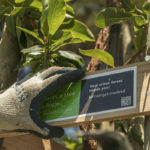
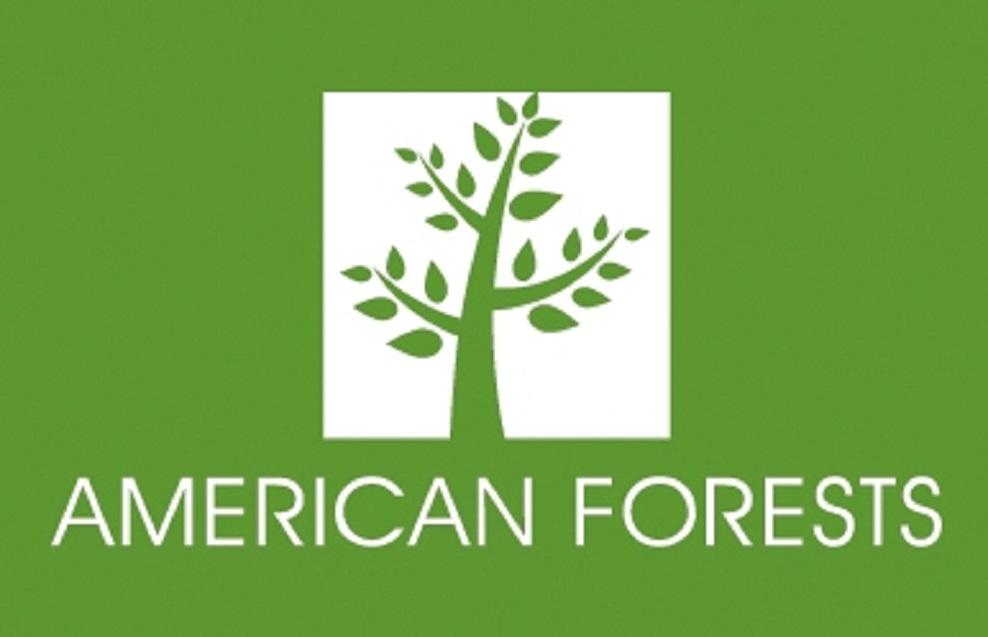
American Forests
2022 - $25,000 Cool Corridors
2021 - $20,000 Tree Equity
By piloting a new “Tree Equity Score” tool in the Bay Area, Seed Fund has laid the foundation for what has potential to become a revolution in greening cities nationwide. In part, Tree Equity Score is a way to build broader awareness that urban tree canopy is too often a map of income and ethnicity; as climate change worsens trees are becoming a critical life-saving and quality of life infrastructure. It is also a state-of-the-art platform that grounds this awareness in a simple metric, providing governors, mayors, city agencies, frontline organizations and residents a new way to mobilize action, attract resources, and track progress toward achieving Tree Equity in every neighborhood.
In 2019, the Doris Duke Charitable Foundation funded American Forests to develop some sort of a national GIS-based decision support tool to address this issue. Having pioneered such technology in the 1990s and 2000s, staff were all too aware that the field of urban conservation had become saturated with sophisticated mapping tools. Yet, that data was still not packaged in a way that told an effective story to generate and maintain momentum at the scale needed to substantively improve green infrastructure where it is most needed.
Seed Fund’s support to pilot a concept for a 0-100 scoring index down to the neighborhood level proved to be the perfect laboratory through which to develop and ground-truth an idea for a tool that could define a new, equity-focused narrative structure for urban forestry.
The first step was to develop the critical underlying methodology to measure how well a neighborhood or municipality is ensuring the benefits of urban tree canopy are reaching populations that are most vulnerable to climate change and public health impacts. The final factors, weighted equally against tree canopy and development density, were designed to be compared within a metro area but sought to avoid comparisons between different cities in vastly different ecoregions across the country. These datasets include:
If Tree Equity Score was to be a vehicle for a movement, it would need to provide more than a number. An online user experience that distills such complex information into a simple narrative for diverse audiences would be critical. The Bay Area pilot allowed for an iterative design process that included gathering feedback from local stakeholders like San Francisco’s Friends of the Urban Forest, Oakland’s urban forestry leaders and the California Urban Forestry Council. This process eventually led to what has become a very well-received mixture of design and function, as users have remarked at how much complex data is synthesized so clearly in the platform.
A mapping company called EarthDefine was so impressed with what they saw in the pilot phase they donated their own high-resolution national data layer to the project. Rather than spending a year developing such a layer, unique Tree Equity scores could be calculated and released in June, 2021 for more than 150,000 neighborhoods in 3,810 municipalities across all 486 urban areas of at least 50,000 people in the contiguous United States. These scores are accompanied by a suite of support tools. These include Vibrant Cities Lab’s Climate and Health Action Guide to help optimize urban forests to address climate change and public health issues, as well as the Community Assessment and Goal-Setting Tool that uses a separate gap score to guide stakeholders in structuring an inclusive, multi-organization urban forestry program.
Tree Equity Score and the critical issue it addresses has generated so much interest that American Forests was invited to co-author a New York Times data article to mark its nationwide release. With 522 million new trees needed to achieve Tree Equity nationwide, this level of visibility will be critical to contextualizing the large scale of investment needed from public, private and foundation sectors to grow this infrastructure that captures carbon, air pollution and storm water in the Bay Area and beyond.
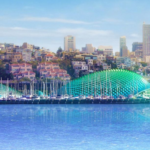
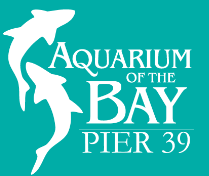
Bay.org
2016 - $10,000 Golden State Waters Action Summit
2015 - $10,000 EcoCenter at Heron’s Head Park
Golden State Waters Action Summit
Golden State Waters: San Francisco Bay and the World Ocean is the first Action Summit dedicated specifically to the protection of the waters where the San Francisco Bay (the largest estuary on the Pacific coast) meets the Ocean. The Summit convened top-level policy makers, government agencies, scientists, non-governmental organizations, and the private sector to participate in the development of actions to address important questions regarding the health of ecosystems in these waters and created an Action Agenda to address current and future issues. Key topics addressed were Climate Change Adaptation, Marine Debris, Marine Protected Areas, and Ocean Exploration and Technology. The Bay Institute is working with its partners to implement the Action Agenda.
EcoCenter at Heron's Head Park
bay.org’s mission is to change the relationship that people have with the Bay by protecting, restoring and inspiring conservation through its five unique divisions. One division is the EcoCenter at Heron’s Head Park, which is a certified LEED-Platinum building and living classroom that demonstrates how we can better use the Earth’s resources to sustain healthy people, economies and ecosystems in our local communities and beyond. Located in Bayview-Hunter’s Point, the EcoCenter provides elementary school through college programming, tours, seminars, workshops, and other events that are offered free of charge.
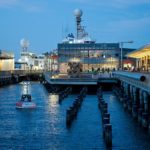

Exploratorium
2022 - $15,000 Urban Fellows Program
2021 - $15,000 Urban Fellows Program
2019 - $10,000 Coastal Resiliency Collaboration
2019 - $10,000 General Support
2018 - $10,000 Urban Fellowship
2017 - $10,000 Urban Fellowship
2017 - $10,000 Habitat: Bay As It Is Symposium
2016 - $5,000 Habitat: Bay As It Is Symposium
2016 - $10,000 Urban Fellowship
2015 - $10,000 Urban Fellowship
2015 - $10,000 Center for Art and Inquiry
2014 - $10,000 Urban Fellowship
2013 - $10,000 Jane Wolf, Bay Lexicon
2013 - $1,000 Living Innovation Zone
2011 - $10,000 Capital Campaign
Since 1969, the Exploratorium’s museum in San Francisco has been home to a renowned collection of 650+ exhibits that draw together science, art, and human perception, and that have changed the way science is taught. Our award-winning programs inspire visitors, empower teachers through our cutting-edge teacher development program, and influence a global movement where 80% of science centers across the globe contain Exploratorium exhibits. The exhibits on the floor are designed to enable experimentation with physical phenomena while simultaneously strengthening thinking and inquiry skills. This is true not only for our audiences of over 850,000 people a year in San Francisco, but for an estimated 250 million people who experience our exhibits at science centers around the world. As founder Frank Oppenheimer saw it: “A lot of people have given up trying to comprehend things, and when they give up with the physical world they give up with the social and political world as well. If we stop trying to understand things, I think we’re all sunk.” The Exploratorium continues to build on his foundational belief that citizens who are curious and empowered to learn about the world are more likely to take action and tackle problems in their communities.
The Exploratorium’s location on Piers 15 and 17, and in particular our investment in the Fisher Bay Observatory, has provided an unprecedented opportunity to engage the public with a wealth of data about the area’s natural and built environments and dynamic access to the researchers collecting it. Since our relocation from the Palace of Fine Arts in 2013, we have been continually evolving exhibits, programs, and partnerships to engage diverse audiences in understanding the complex ecologies that emerge through the interaction between social, cultural, and natural forces and systems. The facility serves as a new model for a combined research and learning space—an open laboratory for researchers, policy makers, and the public. We are educators who have learned that as we face global climate crises, our strategy must be expansive including the contributions of scientists, educators, artists, designers, historians and cultural workers, as well as practitioners in the realms of policy and advocacy.
Due to the Covid-19 pandemic, the Exploratorium closed its doors on March 12, 2020. Our museum has always been a playground of discovery and hands-on learning, but as we remain closed, our educators, exhibit developers, scientists and other staff have gotten creative in sparking curiosity online. From helping teachers make science come alive in virtual classrooms, to engaging families all over the globe in tinkering projects, to illuminating timely science through online events like Covid Conversations and After Dark, the Exploratorium’s online content highlights what the Exploratorium does best: creating learning experiences that are engaging, interactive, inspiring, and trustworthy.
The digital programming and resources reach audiences from young kids to adults, and present a full range of topics from nearly all Exploratorium departments, from biology, to the environment, to Cinema Arts. In all, our digital resources are being used more than ever: traffic to our website, which serves 2M people annually, is up by nearly 300%. The Exploratorium is proud to continue sparking curiosity wherever people are, whether the kitchen table laboratory, the virtual classroom, the outdoors, or—eventually—back at Pier 15
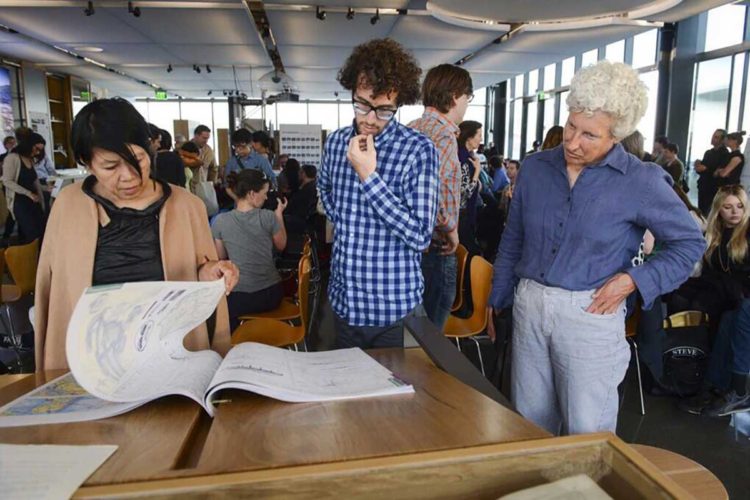
Urban Fellowship
The Exploratorium's new Urban Fellow program will address issues related to climate change and rising sea levels. This program situates an artist or urban practitioner in a residency within the Bay Observatory to explore the human relationship to the urban environment. Fellows could explore concrete forms: such as architecture and infrastructure: as well as human forms: such as approaches to planning or individual practices within the city. This investigation is both important and timely as urban areas globally explore the issue of climate change and coastal resiliency.
Jane Wolf, Bay Lexicon
Bay Lexicon is an illustrated field guide to San Francisco’s shoreline. Using methods and tools from landscape scholarship, design, and science education, Bay Lexicon aims to encourage observation and enquiry about the natural world and its relation to culture.
Living Innovation Zone
The LIZ project is a place making project, which encourages people to engage with their environment and each other in new and surprising ways. The Exploratorium relies on this kind of open-ended inquiry as a means of engaging people and encouraging them to learn about themselves and the world around them.
Capital Campaign
It is the Exploratorium’s goal to be the world’s first net zero energy, carbon neutral museum. Their LEED Platinum certification sets the stage as they continue to work on their sustainability goals. The new location on San Francisco’s waterfront showcases a premiere “green” building, operating with maximum energy efficiency and preservation of the atmosphere.
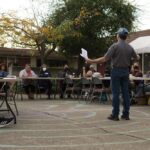
Great Communities Collaborative

Great Communities Collaborative
2022 - $25,000 General Support
The Great Communities Collaborative (GCC), launched in 2005, is a multi-sector initiative housed at San Francisco Foundation that engages local organizations in shaping the future of housing, transportation, regional land use, and climate resilience in the nine-county Bay Area.
The Great Communities Collaborative convenes funders, public sector agencies, elected officials, and nonprofit organizations through the GCC Funders Network and multiple working groups. Together we envision and advance a racially equitable, economically inclusive, and environmentally sustainable Bay Area with thriving neighborhoods that are well connected to regional opportunities and affordable for people of color and underpaid workers. We also help protect people’s ability to stay in their homes, preserve existing affordable housing, and promote the production of new affordable housing, especially on public lands.
By involving more people in planning and decision-making about their neighborhoods, GCC helps bring a diversity of voices into conversations around the future of our cities, counties, and the Bay Area as a whole, leading to new policies and practices around regional planning. They tackle regional inequities by collaboratively funding efforts that:
Champion Racial Equity: Great Communities Collaborative works to ensure that marginalized communities – which are often predominately made up of Black, Indigenous, and other people of color – are involved in decision making around housing, transportation, land use, and climate resilience, to drive outcomes that promote racial equity and economic inclusion. Great Communities Collaborative produced a report in March 2022 called Five Ways Philanthropy Can Catalyze Tenant-Centered Housing Preservation with LISC Bay Area and San Francisco Foundation, which outlines how the pandemic has disproportionately affected the housing stability of people of color, and how to preserve housing through a tenant-centered lens to achieve equity.
Center Impacted People: Great Communities Collaborative funders, partners, priorities, program areas, and strategies center Black, Indigenous, and people of color communities who have experienced and are experiencing the harshest impacts from historical and systemic racial discrimination and economic marginalization. We believe that the people most impacted by inequities should be involved in designing their own solutions, so we strive to center their expertise, be guided by their lived experiences, amplify their voices, advance their solutions, and position them as leaders for outreach, education, and advocacy efforts, including engaging with policymakers.
GCC funded local organizing through the Silicon Valley Rising Coalition, which includes many labor and community organizations. The coalition gathered community input through three town hall meetings and a community survey. GCC also funded a research study to quantify the impact of the proposed Google campus on the surrounding area, which gave advocates the necessary data to push for greater commitments around affordable housing. The Silicon Valley Rising Coalition ultimately achieved a landmark $200M community benefits agreement from Google in 2021 for downtown San Jose, which included $150M for affordable housing and community stabilization.
Change Policies and Systems: As a multi-sector network of organizations and agencies, the very purpose of Great Communities Collaborative is to bring people together to share, learn, and find solutions to some of the Bay Area’s most pressing problems. GCC was involved in passing AB 1486 to build a regional “Public Land for Public Good” framework to get more Affordable Housing built on public land. As a result, 75% of new affordable housing in San Mateo County will now be built on public land. GCC helped launch two housing loan funds at the Metropolitan Transportation Commission (MTC) – the $40M Bay Area Transit Oriented Affordable Housing Fund (TOAH) and the $49M Bay Area Preservation Pilot (BAPP). Both funds prioritize projects that will create affordable housing for people of color, low-income people, and marginalized communities. We promote policy solutions because they can transform the root causes of our state’s inequality crises. These inequalities are rooted in policies and practices that, collectively, we have the power to change.

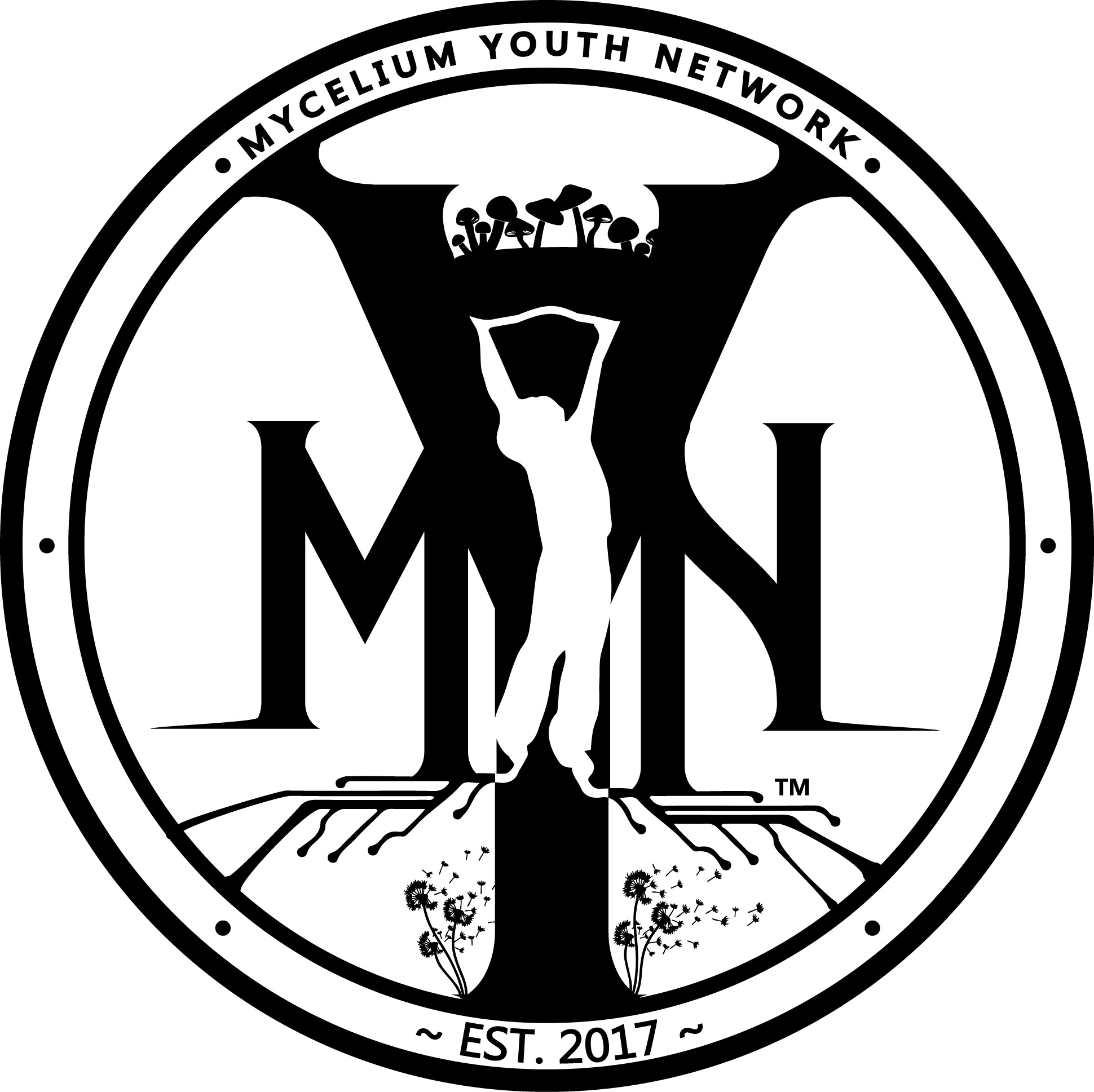
Mycelium Youth Network (MYN)
2022 - $15,000 Youth Council
2021 - $15,000 Climate Resilience Work With Youth
Mycelium Youth Network (MYN), founded in 2017, is an all BIPOC, groundbreaking, youth-centered organization in the San Francisco Bay Area that prepares low-income Black and Brown youth in neighborhoods most impacted by both climate and environmental injustice, and who are most vulnerable to and already feeling the effects of environmental racism, for climate change.
MYN was founded to fill a curriculum gap in too many schools that fail to include climate resiliency in STEAM instruction. Through partnerships with schools and stand alone programming, they use a merger of ancestral traditions and traditional ecological knowledge that emphasize youth environmental stewardship and relationship building alongside a rigorous science, technology, engineering, arts, and math (STEAM) curriculum that focuses on practical hands-on skills for climate resilience and mitigation that youth create and implement in their homes and local communities.
Youth are empowered to grow as visionary leaders and budding environmentalists, connect with ancestral teachings, and trust in the wisdom of the natural world. MYN centers this work on intersectional climate justice, which entails community-building but also preparing future leaders to carry out systemic change. In just three short years, they have provided hands-on climate-resilient training to close to a thousand frontline low-income youth of color throughout Oakland and the Bay Area. The skills youth gain in these programs are agency, leadership building, and rooted in a strong belief in the power of citizen science to change the world, crucial resources needed as the community collectively faces an increasingly precarious climate-affected world.
The Seed Fund will provide generous support for MYN’s groundbreaking current program Climate Resilient Schools which, working collaboratively with communities at several Oakland Unified School District and San Francisco Unified school sites, will create a scalable model for what community climate resilience can look like at a school across several areas of climate resilience: electricity, food, water, and air, each of which pertains to an area of their programming (Science for Survival, Growing Our Health: Food, Soil, and Carbon Drawdown, Water is Life, and Clean Air is a Right). This includes infrastructure building at schools sites, including water catchment systems, community events to foster community voice and prioritize community needs, creating aligned curriculum, and delivering professional development support for teachers and schools to embed the work. This pilot will create the model that aligns with MYN’s goals to scale the curriculum across both districts in the future, with coordinated learning pathways across middle and high school curricula. Even more, MYN envisions this work as going beyond the local community and into the larger world, creating data points for educators, adaptation professionals, and climate scientists to use in the promotion of tools to support global efforts to fight climate change. Data collected in this work will also be instrumental in guiding future curriculum and projects both locally as well as a guide for other cities and states.
This funded project directly supports MYN’s theory of change and organizational mission that building the capacity of front-line communities to address climate change not only mitigates the worst of climate change in the short-term but creates new ways for communities to engage with their natural resources sustainably in the long-term. Additionally, centering climate resilience at school sites ensures youth and their community members see themselves, their communities, and their futures directly aligned with school curricula, creating an important opportunity for real, collaborative, community-based climate solutions—all led by youth—bringing hope, resilience and youth-led community preparedness to those who are most impacted by climate change and environmental racism.
Mycelium is already considered a pioneer in climate education, named as one of the only organizations doing specific climate related work (International Transformational Resilience Coalition press release on 1/8/2019) and recognized internationally by the Quaker United Nations People’s Empowerment Climate Series. They have been profiled in SF Chronicle, KQED, Estuary Magazine, our podcast in We Rise productions, and a blog on us by Columbia University’s State of the Planet at their Earth Institute. MYN has also served as a core member of the Oakland Climate Action Coalition (OCAC) and was instrumental in drafting culturally responsive youth-oriented solutions to climate change.
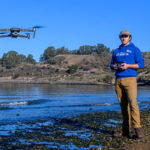

San Francisco Baykeeper
2022 - $15.000 Rewilding Coasts
2019 - $15,000 Coastal Resiliency
2018 - $15,000 Sediment Removal Prevention
San Francisco Baykeeper is the only organization that regularly patrols the Bay for polluters, by both sea and air, and uses environmental laws and the latest science to hold them accountable.
Baykeeper is a fierce champion for the Bay, monitoring the biggest threats to the Bay’s health. This can include municipal sewage outfalls, as well as government agencies and industrial operations that are out of compliance with the anti-pollution laws that keep the Bay and Bay Area communities healthy. In many cases, the polluters can be convinced to fix what isn’t working, but Baykeeper's team of scientists and attorneys is always ready to fight for the Bay in court.
The organization was founded in 1989, and got off to a start worthy of Barbary Coast legend. A tipster called the Baykeeper hotline—which still takes calls to this day—and alerted Baykeeper about a renegade shipyard that was illegally scooping tons of toxic mud off the Bay floor and dumping it onshore. Patrolling by kayak in the dark of night, Baykeeper caught the culprits red-handed—and in the end the Bay won: The company paid stiff fines, and its officers went to jail.
Baykeeper's recent wins for the Bay Area include securing a ban on the handling and storage of toxic coal in Richmond, which will keep more than 1 million tons of toxic coal out of the East Bay community every year. Also, Baykeeper took legal action against the US Coast Guard that secured changes in how the Coast Guard cleans its buoys, which will keep toxic heavy metals out of the Bay—and out of all the waters where the Coast Guard operates.
Baykeeper defeated the Trump administration in 2020 when a federal judge ruled in the organization's favor in Baykeeper vs EPA to protect 1,400 acres of potential wetlands, which would also buffer South Bay communities from the destructive effects of sea level rise.
Baykeeper recognizes climate change as the greatest threat facing the San Francisco Bay today, along with consequent sea level rise. The Bay Area has a dense waterfront population, with people living next door to over 1,000 toxic industrial sites along its shore. This includes Superfund sites in Hunters Point, Alameda, Oakland, Richmond, and San Jose. These toxic sites pose eminent danger to Bay Area residents.
There is a very real possibility that during a storm, the already elevated waters of the Bay would flood toxic sites, flushing pollutants into the surrounding neighborhoods. Bay Area homes, schools, and businesses would be flooded with poison. Critical infrastructure would be under water too, including SFO and Oakland Airport, roads and freeways throughout the Bay Area, wastewater treatment facilities, and more.
The Bay Area needs to institute a region-wide climate adaptation plan with teeth and a timeline—a plan that also identifies and prioritizes contaminated shoreline areas and industrial sites for cleanup.
Baykeeper's scientists and attorneys are there to help bring that plan together, and to keep an active eye out for polluters. Bayeeper fills a singular role in protecting the San Francisco Bay, the geographic feature that makes the Bay Area unique in the world. The wave that breaks against the shoreline in Tiburon is made of the same water that nourishes the wetlands of Redwood City.
In order to make the Bay more resilient to climate-driven sea level rise, which could devastate San Francisco Bay shorelines and communities, the layers of sand and mud on the Bay's floor need to stay healthy. When healthy, this sediment replenishes shorelines and wetlands, providing natural protection against rising tides. But private companies, as well as federal and state agencies, have mismanaged and exploited this resource. Baykeeper, with support from the Seed Fund, uses environmental law and science to advocate for safer, state-of-the-art dredging practices, and won a landmark legal victory when the California Court of Appeal ruled that state agencies may not consider sand mining and other mining in waterways to be in the public good.
San Francisco Bay is uniquely vulnerable to the ravages of climate change. There are well over 1,000 toxic sites along the Bay, active or no longer in use, that could flood the Bay and adjoining neighborhoods with industrial poisons if the sea level rises—as science predicts it will. With support from the Seed Fund, Baykeeper investigates potentially polluting sites along the Bay that should be prioritized for cleanup, protects wetlands and potential wetlands from development—including prevailing against the Trump administration in Baykeeper vs EPA, which saved South Bay salt ponds from being paved over—and educates decisionmakers about the critical need for regional planning to guard against the effects of climate-driven sea level rise.
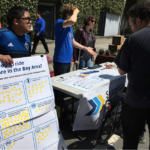
Seamless Bay Area
2023 - $15,000 Integrated, Affordable Bay Area Transit Fares
2020 - $15,000 General Support
Public transportation in the Bay Area is broken, with 27 separate transit agencies operating with little coordination and without a regional vision. As a result, transit riders in the Bay Area must navigate unreliable service, slow speeds, lack of connections, and confusing wayfinding information. It's no wonder only five percent of all trips in the Bay Area are on transit.
The Bay Area's lack of a connected, convenient public transportation system hurts everyone. It leaves many people with no option but to drive everywhere, spending more of their paycheck on transportation costs, and more of their time in long commutes. It’s bad for the economy, for equity, and for the environment. In addition, the COVID-19 pandemic has further weakened the region’s transit system, reducing agency budgets and leading to major service cuts that disproportionately impact transit-dependent people and essential workers.
It doesn’t have to be this way. Seamless Bay Area was founded in 2017 with the goal of transforming the Bay Area’s fragmented and inconvenient public transit into a truly world-class, integrated, equitable system that connects people and communities across our nine-country region. Through research and thought leadership, public education and engagement, and grassroots advocacy, Seamless Bay Area is building a coalition of elected officials, transit leaders, riders, and advocates committed to changing the region’s transit system for the better.
While transit operators across the country - including in the Bay Area - are currently facing the worst financial and operational crisis in a generation, there are also unprecedented opportunities to bring about transformative change.
Seamless Bay Area’s original proposals, maps, and interactive tools are helping Bay Area leaders and community members understand how the region’s transit system could be improved, and galvanizing them to take action.
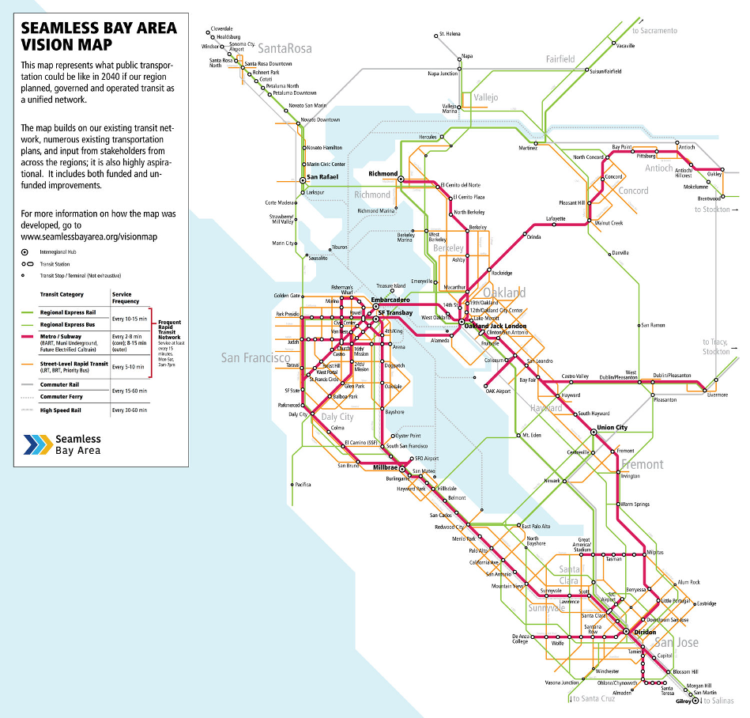
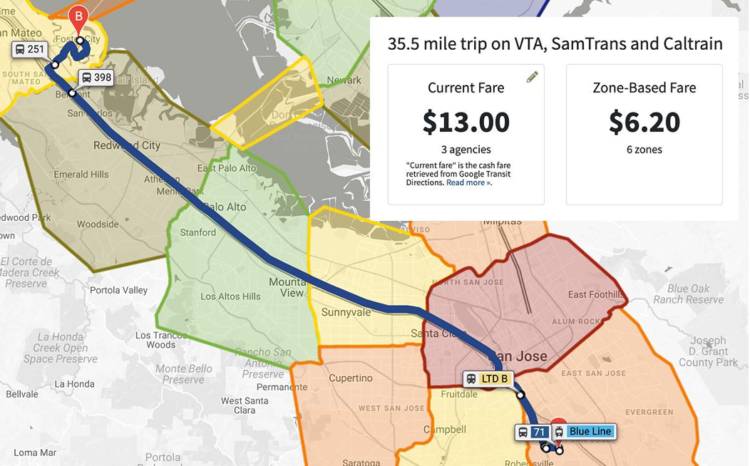
Through regular public webinars, information sessions, networking events, and rider forums, Seamless Bay Area is educating the public, building broad support for transit improvements, and amplifying the voices and perspectives of transit riders.
In 2019, Seamless Bay Area launched a set of seven Seamless Transit Principles to build support among members of the public, elected officials, organizations, and jurisdictions for integrated, rider-friendly transit. To date, the principles have been endorsed by over 35 organizations, including SPUR, TransForm, and Urban Habitat; by cities and counties representing millions of Bay Area residents; and by over 1,800 individuals.
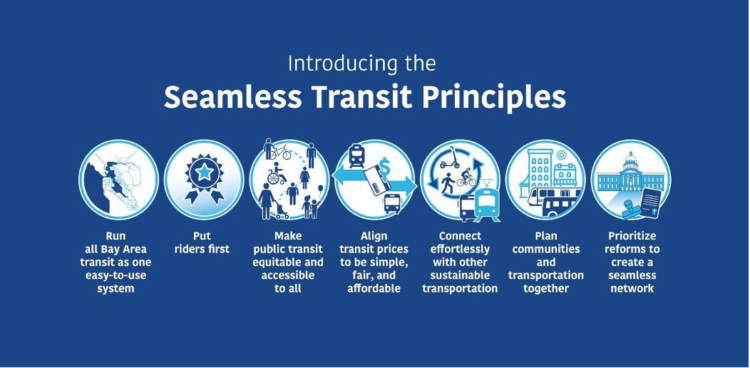
Seamless Bay Area has also partnered with leading experts to conduct research on international best practices for well-coordinated, affordable, high-ridership transit systems, and educate transit agency leaders, staff, and policymakers on best practices.
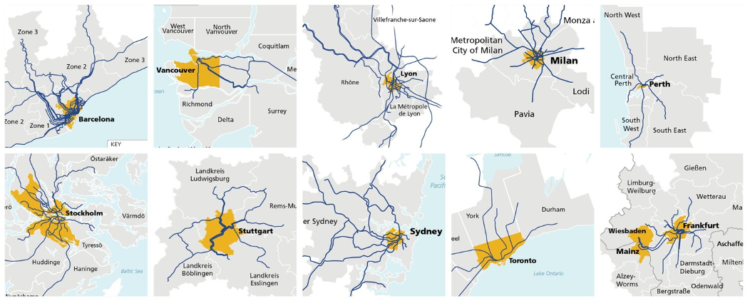
Thanks to the group’s successful advocacy to date, in 2020 Seamless Bay Area was invited to serve on the region’s 32-member Bay Area Blue Ribbon Transit Recovery Task Force, a group convened for the purpose of helping Bay Area transit operators navigate and recover from the COVID crisis. Seamless Bay Area also serves on the region’s Fare Integration Stakeholder Group, which is shaping a regional Fare Coordination and Integration Study with the potential to make transit more convenient and affordable in the Bay Area for many years to come.
By articulating a clear vision for change and building a growing coalition of support among transit leaders, advocates, and the general public, Seamless Bay Area is uniquely well-positioned to lead the way toward the integrated transit system the region deserves.
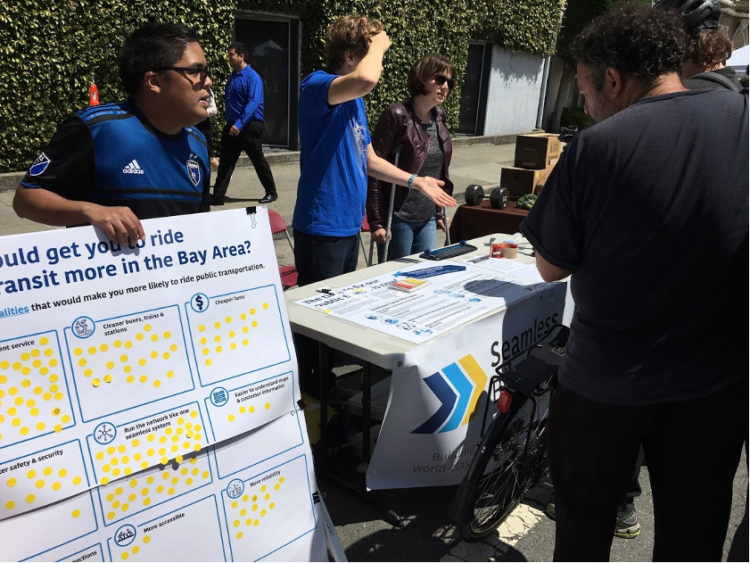

SPUR (formerly San Francisco Planning + Urban Research Association)

SPUR (formerly San Francisco Planning + Urban Research Association)
2023 - $20,000 Transit Oriented Communities
2021 - $15,000 Transit Priority Program
2019 - $10,000 Operational Landscape Units Project
2018 - $20,000 Regional Plan
2017 - $10,000 Operational Landscape Units Project (with SFEI)
2017 - $10,000 Framework for Sea-Level Rise Adaptation
2016 - $15,000 Framework for Sea-Level Rise Adaptation
2014 - $15,000 Fossil Fuel Reduction Report
2010 - 2014 $38,000 Food Systems and Urban Agriculture Program
2007 - $5,000 General Support
Through research, education and advocacy, SPUR works to create an equitable, sustainable and prosperous region. SPUR practices urban policy, developing and advocating for ideas and reforms to bring about systems change. The decisions that shape housing, transportation, land use, economics, food access, sustainability and resilience have significant impacts on people’s lives. SPUR also focuses on governance because it’s how communities organize themselves to achieve collective goals and because SPUR believes in the power of government as a force for good. SPUR works across the nine counties of the Bay Area because the structural systems that shape people’s lives— the housing market, the transportation network, the economy — are regional. SPUR does deep work in San Francisco, San José and Oakland because policies set in the region’s three biggest cities have widespread impact on most Bay Area residents and because local context is critical for effective policy. SPUR believes that community and individual well-being are healthiest when a society achieves equity, sustainability and prosperity. Equity because systemic racism continues to create unjust and unacceptable outcomes for many members of our community. Sustainability because human well-being depends on a healthy and thriving natural environment. And prosperity because meeting individual and collective needs requires resources. SPUR conducts its work through research, education and advocacy because these tools have the power to change minds and shape outcomes. The organization believes that profound systems change requires addressing beliefs, relationships and policies, and SPUR works at all three of these levels. SPUR grounds its work in a spirit of inquiry and a big-tent perspective that engages partners and communities across the region.
SPUR has many key goals related to each of the organization's major policy areas, including:
Planning: Add new jobs and housing where they will support equity and sustainability, and make neighborhoods safe and welcoming to everyone.
Housing: Make housing affordable for everyone.
Transportation: Make it fast, easy and inexpensive to get around without driving alone.
Sustainability + Resilience: Eliminate carbon emissions and make communities resilient to climate change.
Economic Justice: Enable all people to participate in the region’s thriving economy and attain economic security.
Good Government: Support a high-functioning public sector that serves the collective good.
Food + Agriculture: Create healthy, just and sustainable food systems, and put an end to food insecurity.
SPUR has accomplished many things over the course of its 100+ year history. The organization shaped some of the most important planning and urban policy issues in the region, including planning for the BART system, establishing the Golden Gate National Recreation Area and the Bay Conservation and Development Commission, proposing San Francisco’s Affordable Housing Trust Fund and more. Recent achievements of the organization in 2020, include:
Impact Report attached; our most recent annual report was online only--it is available here: https://www.spur.org/about/annual-reports/2020


Streetsblog
2023 - $12,000 General Support
2021 - $12,000 General Support
2019 - $10,000 General Support
2018 - $8,000 General Support
2017 - $8,000 General Support
2017 - $8,000 General Support
2016 - $8,000 General Support
2011 - $8,000 General Support
Streetsblog is a non-profit daily news source, online community and political mobilizer for the Bay Area’s Livable Streets movement. Streetsblog frames the public debate on transportation and planning issues, creating momentum for more sustainable streets. A team of local writers collaborates with writers throughout California and Nationally to provide full coverage of transportation reform, urban planning and the Livable Streets movement locally and nationwide.
Streetsblog began in 2006 as a single local blog covering transportation and land use issues in New York City. The experiment proved a dramatic success, and it showcased the potential for focused advocacy journalism to empower overlooked constituencies and to usher in a reform-minded transportation policy agenda - SF.Streetsblog was launched in January 2009. The blog quickly became an influential voice and a mobilizer for the local transportation reform movement. Today, it reaches nearly 70,000 direct monthly readers, and plays a key role in the Bay Area’s Livable Streets movement. Their work is published on SF Gate and Bay Citizen. Streetsblog’s drumbeat of pedestrian, bicycle and transit stories have helped keep these important issues on the radar of supervisors and policy makers at City Hall and the San Francisco Municipal Transportation Agency.

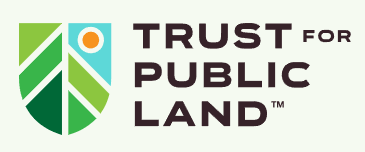
Trust for Public Land
2022 - $20,000 Green Schoolyards Oakland
2021 - $20,000 India Basin
2018 - $20,000 India Basin Waterfront Park
2017 - $20,000 Parks for People Project: India Basin, San Francisco
2017 - $20,000 Innes Avenue Project
2016 - $20,000 Innes Avenue Project
2015 - $20,000 Innes Avenue Project
The Trust for Public Land (TPL) is dedicated to helping local communities with their conservation needs by raising funds, conducting research, designing and renovating parks, playgrounds, trails and gardens, as well as acquiring and protecting land. With over 30 offices across the nation, TPL works to provide access to nature for everyone and has completed over 5,000 conservation projects nationwide.
Locally, TPL is developing a plan to transform the 900 Innes Avenue property from an industrial brownfield into a vibrant community park featuring climate-smart infrastructure. Redeveloping the property is an important step in creating a more resilient shoreline that is adapted for sea level rise. 900 Innes will create green space and alternative transportation options for the under-served residents of Bayview/Hunters Point.


Walk San Francisco
2023 - $15,000 Climate Justice in the Bayview
2022 - $10,000 General Support
2021 - $10,000 20mph Speed Limit in the Tenderloin: Data Study
2016 - $10,000 Green Connections
2014 - $10,000 Vision Zero
2013 - $10,000 General Support
2012 - $6,000 General Support
San Francisco can and should be the safest, most walkable city in the United States. Yet every day, at least 3 people on average are hit by cars while walking in our city.
Walk San Francisco exists to change this. Walk San Francisco (Walk SF) was founded in 1998 by a small group of volunteers united by the belief that the city’s streets and sidewalks should be safe and welcoming for all.
Today, Walk SF is known as a tireless advocate in pushing for – and winning – life-saving changes across the city. Some defining wins include: 15 MPH speed zones around 181 schools; San Francisco’s second-in-the-nation commitment to Vision Zero; the removal of private vehicles from Market Street; the tax on Uber and Lyft; and groundbreaking changes to some of the city’s most dangerous streets.
Walk SF also founded and supports San Francisco Bay Area Families for Safe Streets, a group of traffic crash survivors and the loved ones of people who have been killed or injured in traffic crashes. Members offer emotional support and work together to win changes to prevent more lives from being destroyed by traffic violence. Each November, Families for Safe Streets and Walk SF hold World Day of Remembrance for Road Traffic Victims
In addition, Walk SF works to increase the number of children safely getting to school on foot, bicycle, scooter, and transit as part of the San Francisco Safe Routes to School Partnership. Walk SF also brings together the voices of the 30+ community-based organizations, nonprofits, and civic groups that make up the Vision Zero Coalition, plus leads the Senior and Disability Work Group. And throughout the year, Walk SF offers a variety of walks to both explore the pure joys of exploring the city on foot and the challenges faced due to unsafe streets.
In 2019, Walk SF launched its first-ever three-year strategic plan. The long-term goals outlined in it are to: 1) end pedestrian traffic deaths and severe injuries, and 2) increase the number of trips people take on foot.
As part of the strategic plan, Walk SF prioritized both what it works on and how it will work. Crash data shows that San Francisco’s residents living in communities of concern suffer the most from traffic violence. These are communities with the most low-income people, immigrants, communities of color, seniors, children, and people with disabilities. That is why while Walk SF works in the interest of all pedestrians in San Francisco, Walk SF prioritizes its efforts on communities and/or geographies where issues of equity are most at play.
Walk SF also focuses its outreach and education in communities and populations that have disproportionately been impacted by traffic violence and often not engaged in the community process. Walk SF works hard to ensure a community’s voice is authentically brought forward to guide advocacy efforts, and build coalitions across diverse communities. That’s why Walk SF goes much deeper in its community engagement and advocacy work in neighborhoods like the Tenderloin, where traffic violence is a daily reality for the nearly 40,000 people who live there.
Walk SF’s vision is for a San Francisco where everyone – of every age and ability – can get around safely. And the benefits of making this vision a reality ripple far beyond the precious lives that will be saved. When it is safe and inviting for many more people to walk in San Francisco, it also means reducing climate emissions. It means thriving neighborhood businesses and greater health. It means changing the fact that people of color are more likely to live, work, and walk on dangerous streets. It means stronger and more connected communities.
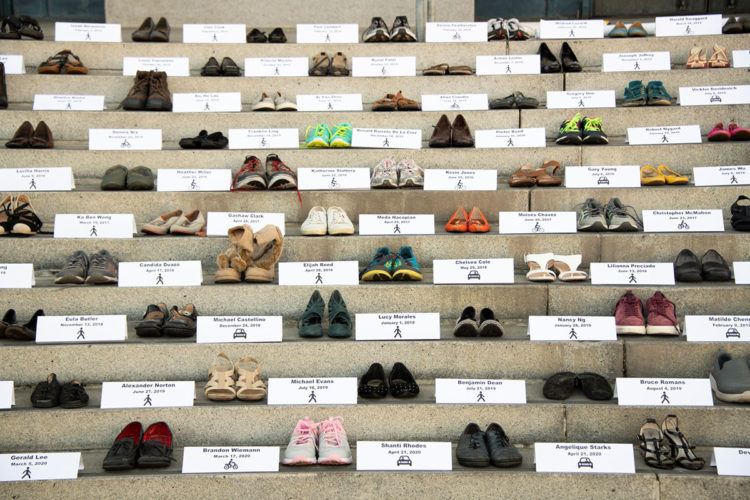
A memorial to the lives lost in traffic crashes in San Francisco since January 2014. From the 2020 World Day of Remembrance for Road Traffic Victims. Photo by William McLeod with permission from Walk SF.
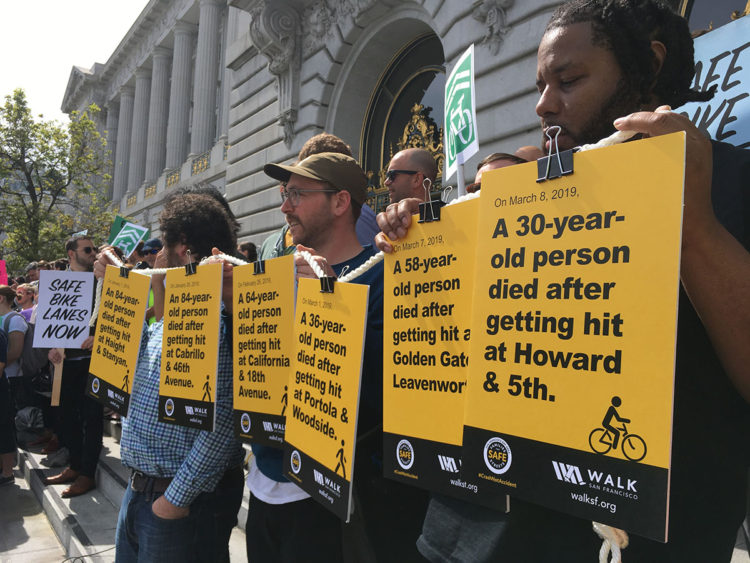
At a March 2019 action on the steps of City Hall to shine a light on recent traffic fatalities. Photo by Walk SF.